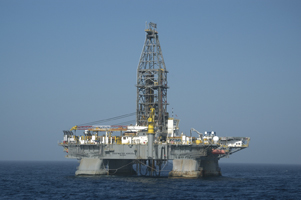Risk Managers’ Forum
In catastrophic situations, new options have to be considered continually; sticking to a plan that doesn’t fit the circumstances won’t work
In the first century CE, black swans were believed not to exist. They lived in the popular imagination as a metaphor for something unknown—until a black swan was sighted in the late 1600s. This caused a sensation in Europe, where the “all swans are white” adage was commonly used as an example of a well-known truth.
In today’s parlance, a “Black Swan” is a rare event that goes beyond normal expectations.
Considered a high-magnitude black swan event, the BP Gulf of Mexico oil spill—at about 210 million gallons—is officially the largest accidental petroleum spill to date. The incident began on April 20, 2010, when a well about a mile below the surface of the Gulf of Mexico blew out, causing an explosion on the Deepwater Horizon drilling rig. The rig sat atop BP’s Macondo well and floated in 4,992 feet of water, just beyond the gentle slope of the continental shelf about 41 miles off the coast of Louisiana. Eleven people lost their lives, 17 individuals had traumatic injuries, and 98 others escaped relatively unharmed.
After the explosion, the fire on the rig lasted 36 hours, until the Deepwater Horizon sank on April 22.Oil flowed through the underwater well opening for 87 days, at a rate estimated as high as 2.5 million gallons per day. BP Exploration & Production, Inc., was the lease operator of the rig and the well property. Transocean, offshore drilling contractors, owned the semisubmersible Deepwater Horizon and helped operate it for BP.
“I think the biggest takeaway is to plan for the ‘Black Swan’ event—the thing that you think can never possibly happen. Think of the worst thing possible, multiply it, and then go with that in your planning phase.”
—Graham Kenyon, CRM
Vice President of Risk Management
Orion Group Holdings, Inc.
Graham Kenyon, CRM, vice president of risk management at Orion Group Holdings, Inc., was director of risk management for Transocean from 2009 to 2014. He confides, “I don’t think anybody ever thought that an incident like the Deepwater Horizon explosion could happen, even in their wildest dreams. Rig blowouts are not totally uncommon, so getting a kick out of a well, or it going on fire and burning up the rig, although not usual, happens. However, nothing to this scale had taken place before.”
Kenyon elaborates, “The biggest takeaway from this disaster is to plan for the ‘Black Swan’ event—the thing that you think can never possibly happen. Think of the worst thing possible, multiply it, and then go with that in your planning phase.”
He suggests that, when designing a risk plan, a mental leap must be made to anticipate what might go wrong. “Usually, when making your plan, you’re just thinking of all the things that have happened before, if not to your company, then to other companies.” Kenyon muses.
“I don’t think Transocean ever thought they would be involved in the world’s largest litigation or that they would be spending the kind of money they were per month just on lawyers’ fees,” he adds. “They thought their contractual indemnities were clear.”
In the offshore industry, the conventional understanding is that companies like Transocean and Halliburton are basically just suppliers. Transocean drills the hole; Halliburton cements the hole. And they do it all to the well owner’s specifications. The well is “owned” by the oil company. Therefore, the oil company takes all the risk in relation to the well itself. But that norm was challenged when BP attempted to shift liability onto Transocean and other subcontractors.
“After this precedent,” Kenyon observes, “many of the major oil firms tried to pass more of their liability on to subcontractors. Most of the liability was placed back on to BP in this case; only companies like BP could afford to pay for such an event. Transocean was the largest drilling company in the world, but no drilling company would be able to survive on its own, if liability existed, because the finances just aren’t there.”
He adds, “Transocean was insured for nearly a billion dollars, but even that wouldn’t have been enough. Only companies like BP, with double-digit billion-dollar profits per quarter, can deal with that kind of cost.”
However, BP did go after Transocean’s insurance money. The oil company claimed to be a full additional insured on the policy, as opposed to an additional insured that was limited by contract. “They based their argument on the language of the insurance document as opposed to the language of the drilling contract,” Kenyon recalls, noting that this went against the norm.
“BP argued that the four corners of the insurance agreement should be examined in isolation,” he adds. “The insurance agreement said they were an additional insured but did not limit it directly to a particular contract. After that, everyone in risk management really tightened up the additional insured language. Ultimately, Transocean won the legal case, and BP was denied access to Transocean’s insurance, but that was after many years and much expense.”
In a fluid, catastrophic situation, new options have to be considered continually. Kenyon emphasizes, “You’ve got to be flexible, and you have to be unafraid to change the risk management plan as things develop. Sticking to a plan that doesn’t fit the circumstances isn’t going to work.” However, some necessary changes are learned only in hindsight and must be catalogued for future reference.
General policy at the time of the incident was to immediately send in adjusters to take care of surviving crew and their families. Kenyon explains, “If someone was injured in a normal event, adjusters would be sent down to look after the crew and the crew’s family—which we did in this instance, as a matter of course.”
Kenyon continues, “We were used to conducting incidence recorded statements, and if someone wasn’t injured, we’d have them sign a statement to that effect. Well, that policy didn’t work in this situation. Later, it was suggested in Congressional hearings that Transocean was trying to buy off the survivors at an early stage—when they really didn’t know the extent of their own injuries. That actually wasn’t true, but in looking back, it’s something that wouldn’t be done now.”
After the BP Deepwater Horizon incident, there seemed to be a huge difference between the public’s perception of Transocean and the perception of BP. BP was regarded negatively, while Transocean was looked at in a more neutral light. Kenyon attributes the disparity to some actions that Transocean took to meet the changing situation as events unfolded.
“Transocean hired a first-rate PR company,” he explains. The vessel was always referred to by the media as the BP Deepwater Horizon, rather than the Transocean Deepwater Horizon.” This distinction assisted in deflecting some of the negativity surrounding the event away from Transocean and towards BP.
Kenyon adds, “There was already a plan in place to involve this kind of PR firm, but the actual organization was chosen after the incident. This was primarily because of the size and scope of the event, the media attention it drew, and also because Transocean needed a PR firm with strong Washington connections. But Transocean and all the other subcontractors—all they had to do was sit back and let BP’s chief executives speak. The execs said things like, ‘I just want my life back’ and ‘I want to go on vacation.’ They fueled the media fire against themselves.”
Another positive step that Transocean took was to bring a group of lawyers together who could be agile in their response to the incident and its fallout. Kenyon clarifies, “In a situation like this, you’d normally expect a company’s legal department to take control, and outside counsel would be used for extraneous things. Rather than hiring a law firm, which is what BP did, Transocean hired many lawyers and made what they classified as ‘a virtual law firm.’”
Kenyon elaborates, “Transocean handpicked the best lawyers from local firms, particularly in the New Orleans area, where we knew all the trials would happen, and from surrounding areas, where claims were going to come from, and they created this flexible law firm. This gave Transocean a depth of skill a huge law firm couldn’t offer.”
The most important thing that Transocean did, in Kenyon’s opinion, was to take care of the families of the Deepwater Horizon crew. “Most of the families expressed, even in the press, what a great job Transocean did in looking after them.” He adds, “I don’t think it created great PR, but it didn’t create any negative PR. BP in their public dealings never said they were sorry for someone’s loss, which we always did. We never admitted liability, of course, but we always said how sorry we were and asked what we could do.”
Kenyon makes several recommendations for creating and carrying out a risk management plan for a future catastrophe:
- Be open and flexible—learn from what has happened before, but be willing to go against conventional thought and complacency when considering the unthinkable possibilities and how they might unfold.
- Tighten and align the insurance and contractual language—make sure you understand what insurance is in place and what your contracts actually say and how they relate to each other.
- Be ready to provide for any victims and their families—meet their physical and, as much as possible, their emotional needs. Attend to people up front, avoiding far costlier litigation later.
The author
Donna Loughran is a writer for The National Alliance for Insurance Education & Research.






